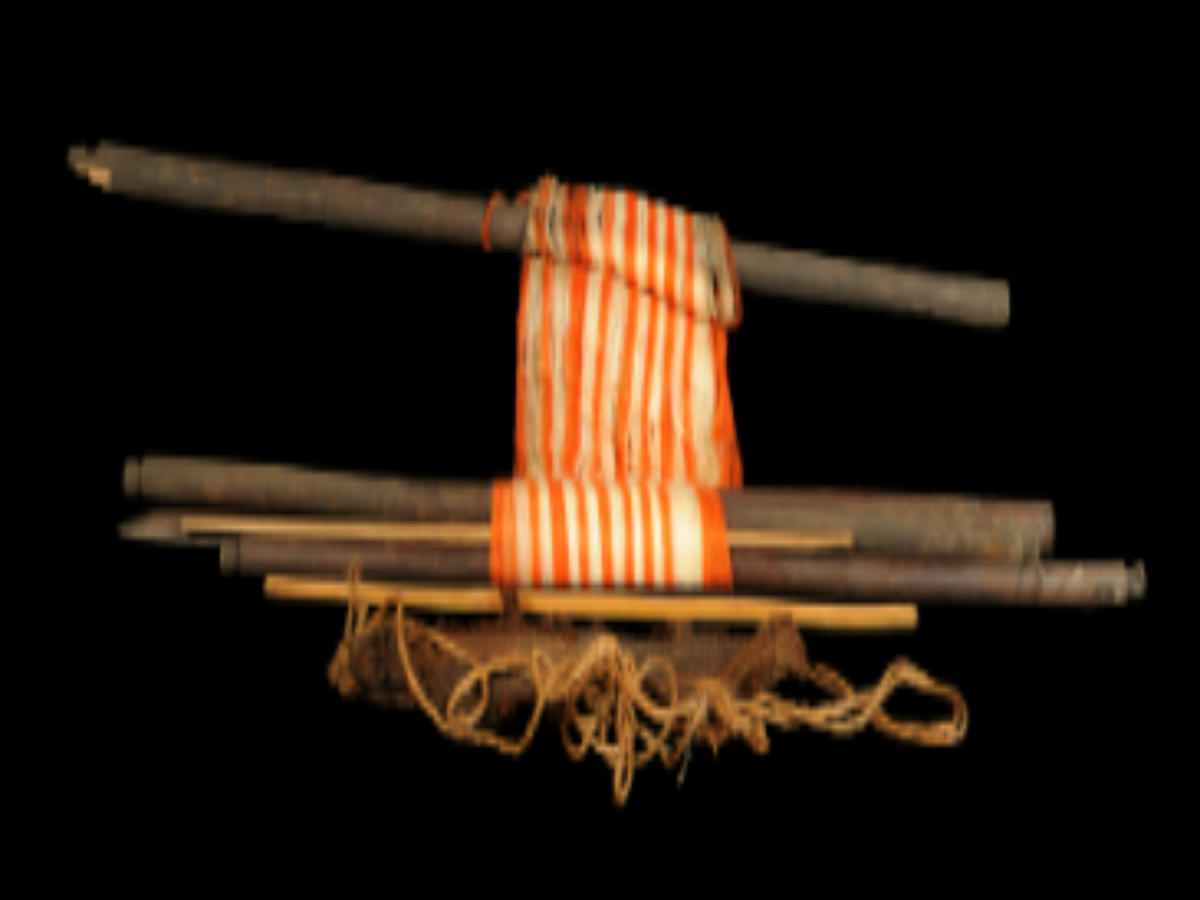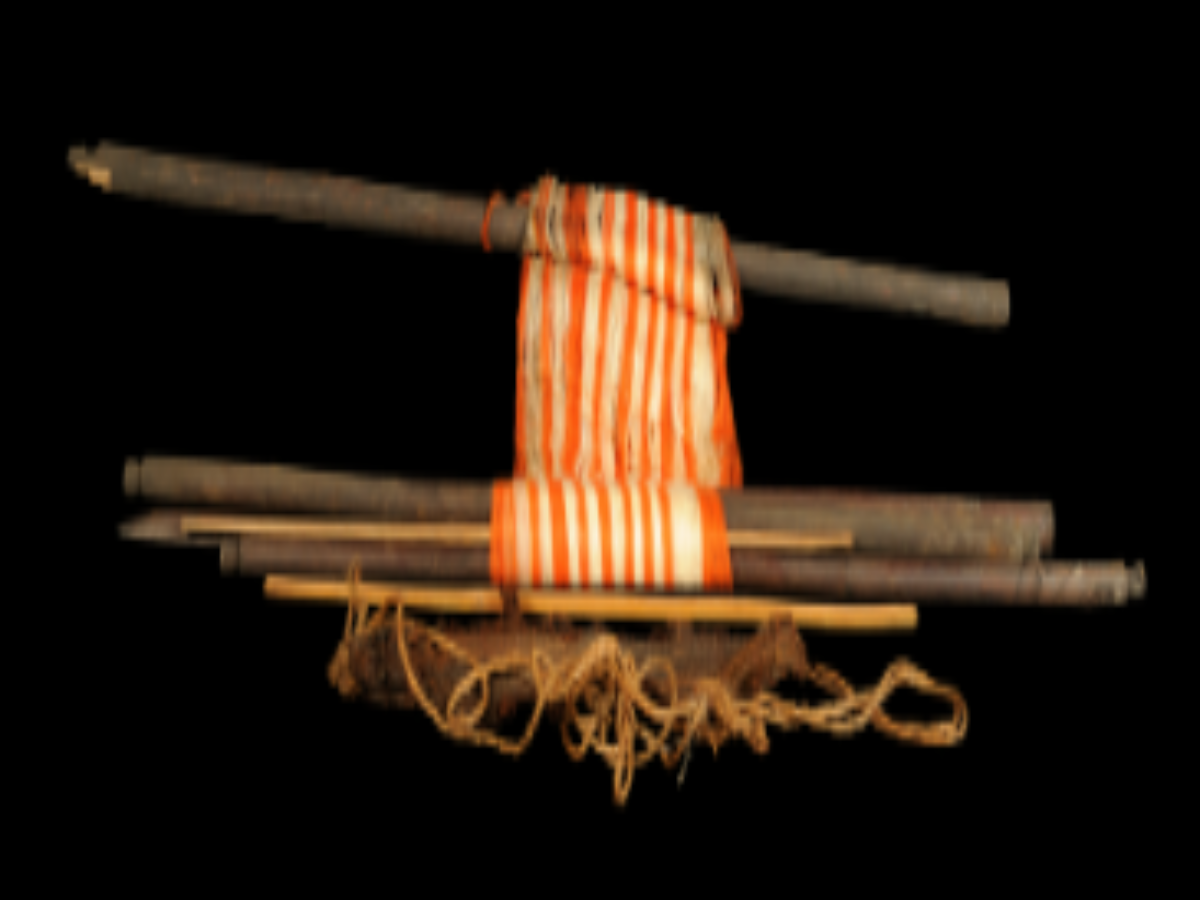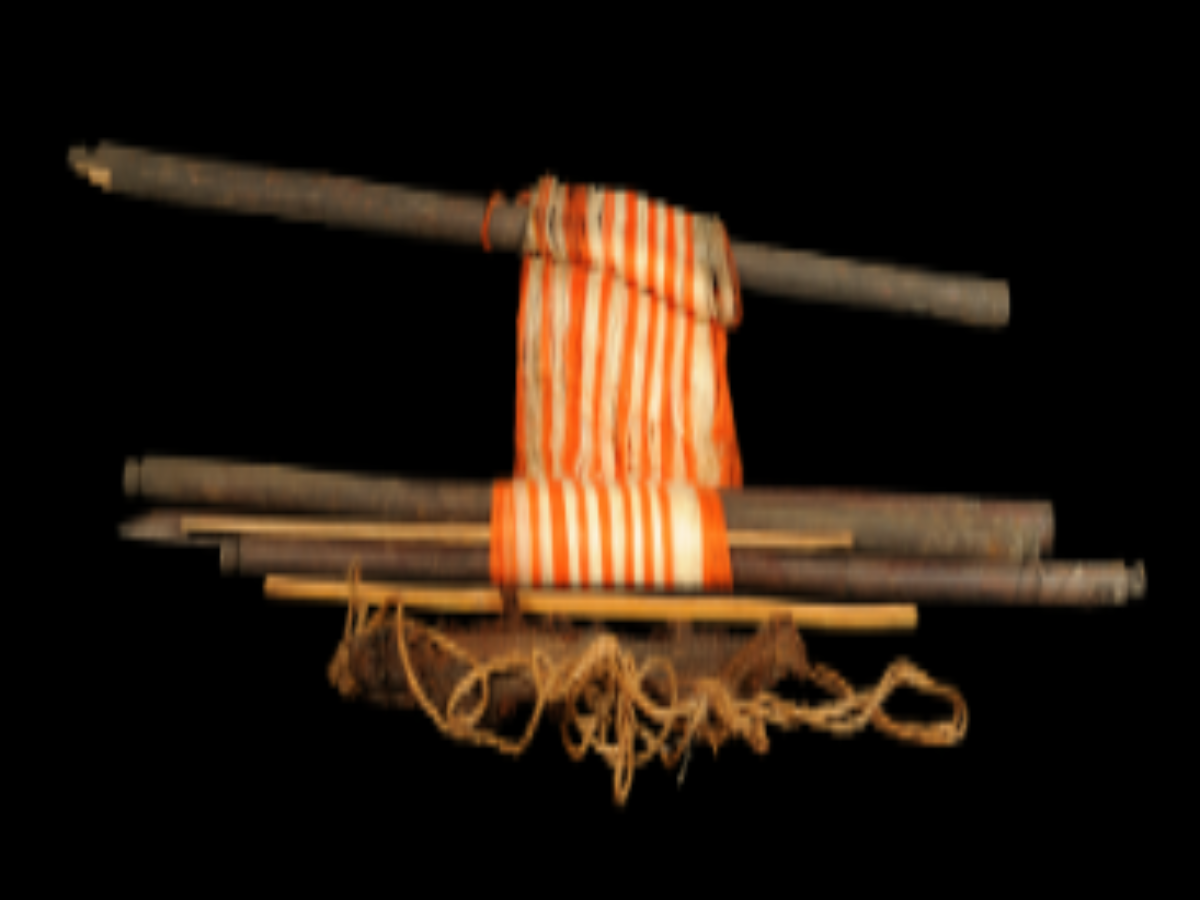State
Tribe Name
Art Type
short description
This Rabha loom of Assam reflects the talent and rich textile heritage of the community. Rabha women are much skilled workers as they weave their handlooms from natural raw materials like bamboo, cotton thread, jute rope, and jute strap. These would be normally household, ritual, and traditional use textiles.The loom consists of eleven pieces of bamboo, each carrying out a work in completion of the whole process of weaving. One of those pieces of bamboo is serrated on one end and will function as a reed or perhaps even that of a beating comb to align all and tighten the weft threads. Another has a flat wide side for function as maybe a spacer or to control some tension. Two bamboo sticks split in two and have tightly coiled cotton threads wrapped around them function as bobbins or shuttles and are quite helpful for interlacing the warp and weft.
Thumbnail

Filter Postion
Left
Filter Background
Off
Theme
Filter Header Image

content
Image

description
This Rabha loom of Assam reflects the talent and rich textile heritage of the community. Rabha women are much skilled workers as they weave their handlooms from natural raw materials like bamboo, cotton thread, jute rope, and jute strap. These would be normally household, ritual, and traditional use textiles.The loom consists of eleven pieces of bamboo, each carrying out a work in completion of the whole process of weaving. One of those pieces of bamboo is serrated on one end and will function as a reed or perhaps even that of a beating comb to align all and tighten the weft threads. Another has a flat wide side for function as maybe a spacer or to control some tension. Two bamboo sticks split in two and have tightly coiled cotton threads wrapped around them function as bobbins or shuttles and are quite helpful for interlacing the warp and weft.
More than a tool, this loom goes further to embody the ecological wisdom and aesthetic values of the Rabha tribe. It speaks against the use of organic materials like bamboo and jute by this culture, meaning the society practices are highly sustainable in keeping humans close to nature. Each and every part needs to be sculpted by the artisan's hand; so much skill, patience, and knowledge would be passed to her from the previous generations of craftspeople.It was once preserved in the Indian Museum-Kolkata, but now it reveals the norm of weaving and hits at its preservation against the loss of indigenous textile culture towards modernization.
More than a tool, this loom goes further to embody the ecological wisdom and aesthetic values of the Rabha tribe. It speaks against the use of organic materials like bamboo and jute by this culture, meaning the society practices are highly sustainable in keeping humans close to nature. Each and every part needs to be sculpted by the artisan's hand; so much skill, patience, and knowledge would be passed to her from the previous generations of craftspeople.It was once preserved in the Indian Museum-Kolkata, but now it reveals the norm of weaving and hits at its preservation against the loss of indigenous textile culture towards modernization.
Image Mode
landscape
promoted
On
Verified
Off
